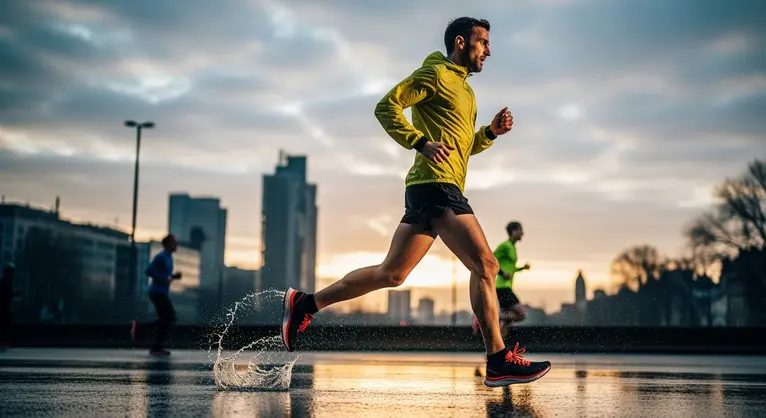Recovery & Injury in Inclusive Sports: A Practical Guide for Every Athlete
When was the last time you thought about injury prevention or recovery—especially as an athlete of any background? Whether you’re a weekend warrior, an aspiring pro, or just starting out, understanding how to stay safe and bounce back from setbacks is key to long-term success. Today, we dive deep into how inclusive sports programs approach these challenges, ensuring everyone thrives together.
Why Inclusive Sports Programs Matter
Sports have the power to unite, uplift, and empower. But, to be truly impactful, programs must serve athletes of all ages, skill levels, and abilities. Inclusive sports programs do just that by designing training, recovery, and injury prevention strategies that work for everyone—regardless of gender, physical ability, or experience.
For example, adapted programs exist not just for those with disabilities, but for youth, women, and older adults whose needs may differ from “standard” training. This people-first approach ensures everyone has the support and information needed to stay healthy, safe, and motivated.
Common Injuries & Proven Prevention Strategies
Injuries like sprains, strains, shin splints, and concussions are all too common, affecting new and seasoned athletes alike. But did you know that tailored prevention can greatly reduce your risk?
- Warm-up protocols: Evidence-based routines like the Knee Injury Prevention Program (KIPP) use dynamic stretches and neuromuscular exercises tailored to common trouble spots—especially helpful for preventing ACL injuries among youth and beginners.
- Strength training: Inclusive programs customize strength and flexibility work to fit each athlete’s body type and ability, minimizing overuse or compensatory movements. For example, scaled weights or resistance bands help those returning from injury re-build gradually.
- Adaptive techniques: Athletes with prosthetics often use shock-absorbing aids, while coaches break down movements step-by-step for those with intellectual disabilities or coordination challenges.
Practical tip: Start every session with a dynamic warm-up, and don’t hesitate to ask your coach about injury risk assessments—they can personalize your plan.
Nutrition & Cutting-Edge Recovery Tools
Your body repairs itself best when fueled well and given the right support.
- Nutrition: Professional programs often involve a nutritionist who tailors anti-inflammatory diets, protein recommendations, and hydration goals. This ensures injured tissues heal quickly and energy levels stay high. Even something as simple as adding more omega-3-rich foods can make a noticeable difference.
- Recovery gadgets: Technology now offers percussive massagers, compression wear, and even wearable motion trackers that help everyone—regardless of ability—recover smarter, not just harder. For adaptive athletes, custom gear like shock-absorbing prosthetics are game-changers.
Quick action: Consider keeping recovery tools like foam rollers or resistance bands at home, and focus on whole foods that reduce inflammation after tough sessions.
The Psychological Side of Recovery
An injured athlete’s greatest battle isn’t always physical. Staying mentally strong through recovery is tough, no matter your background.
- Set realistic goals: Break big milestones into manageable steps, and celebrate progress along the way.
- Seek support: Inclusive programs often offer peer networks and access to sports psychologists who teach resilience, coping strategies, and ways to stay connected with your team during recovery.
Remember, motivation is muscle too—it needs regular training and support!
Community, Accessibility & The Right Tools
Championing accessibility isn’t just about ramps or wider doors—it’s about adaptive training, community-based support, and the right equipment for every athlete.
- Community matters: Many inclusive programs operate at a local chapter level, bringing sport to underserved groups and ensuring no one is left behind after injury.
- Equipment adaptability: From scaled weights for kids and beginners to advanced prosthetics for para-athletes, modern equipment narrows the gap and keeps everyone in the game longer and safer.
Business use-case analogy: Think of inclusive sports programs as a start-up that scales its offerings with its customer’s needs, ensuring there’s no “one size fits all”—just a stronger, more resilient community.
Takeaway: Build Your Resilience with Inclusivity in Mind
Recovery and injury prevention aren’t just for the elite—they’re for every athlete, everywhere. By leaning into evidence-based routines, focusing on nutrition, and supporting mental health, inclusive sports programs create an environment where everyone can succeed.
Ready to put these ideas into practice? Whether it’s joining a local adaptive sports event, creating your own personalized warm-up, or simply talking to a teammate about injury concerns—your long-term performance and happiness depend on it.
Stay strong, stay informed, and always make room for everyone on your team. If you found this helpful, share it with a friend or teammate—for a stronger, healthier community.
Written by the GymPulse Club team—dedicated to science-backed, people-first fitness for all.

